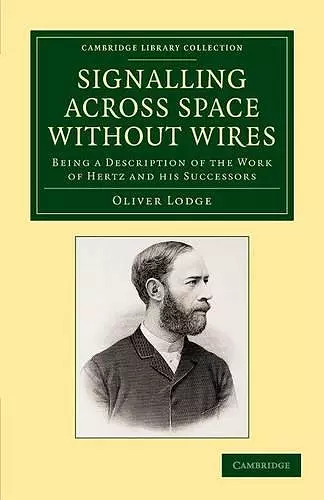Signalling across Space without Wires
Being a Description of the Work of Hertz and his Successors
Format:Paperback
Publisher:Cambridge University Press
Published:28th Mar '13
Currently unavailable, and unfortunately no date known when it will be back

Published in 1900, this revised treatise explores the far-reaching effects of Heinrich Hertz's most famous discovery: wireless radio waves.
In 1894, Heinrich Hertz died aged only thirty-seven. His legacy was the wireless transmission of radio waves: the foundation of modern radio technology. This revised treatise, published in 1900, explains his work from the very basics of radio waves to the cutting edge of wireless telegraphy.The early 1890s saw the development of wireless telegraphy. Although the behaviour of radio waves had been predicted by James Clerk Maxwell, the production of a working coherer occupied some of the greatest practical physicists of the time. A giant in the field was Heinrich Hertz (1857–94), who was among the first to discover that radio waves could travel independently of wires. When Hertz died, his work was continued and soon led to the development of the first wireless radios. This book, published in 1900, is the third edition of Sir Oliver Lodge's popular explanation of Hertz's work. Including the Royal Institution lecture that Lodge (1851–1940) gave in 1894, along with detailed diagrams, it covers the basic principles of radio waves and some of the theory surrounding telegraphic technology. Also included in this reissue is Lodge's 1924 lecture on electrical precipitation, discussing the scintillating possibility of altering atmospheric conditions through the use of electrical charges.
ISBN: 9781108052122
Dimensions: 216mm x 140mm x 11mm
Weight: 250g
190 pages